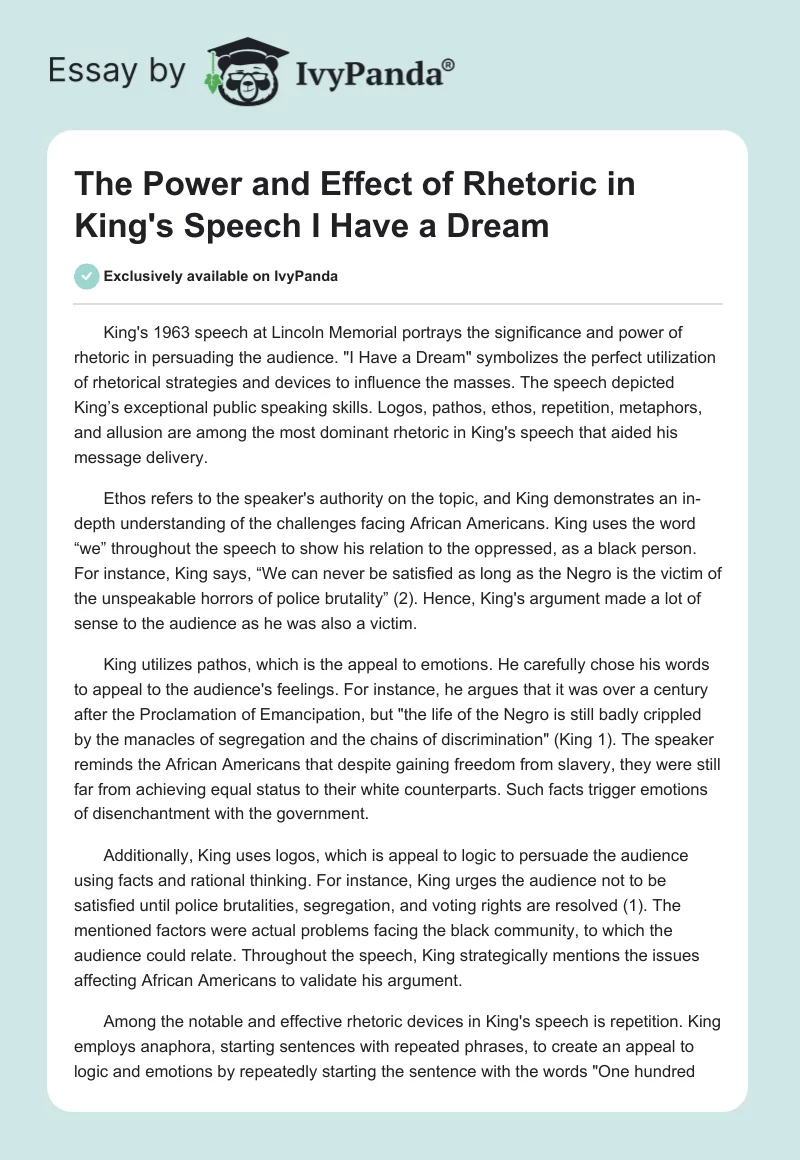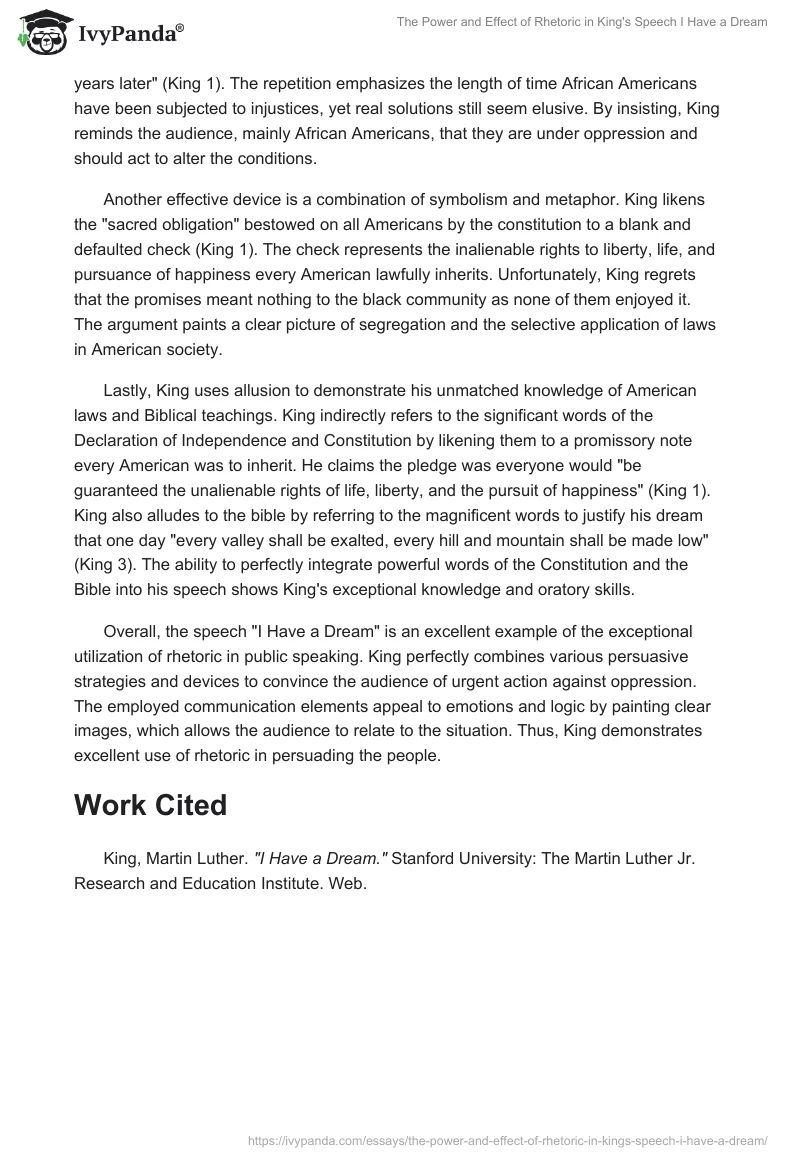King’s 1963 speech at Lincoln Memorial portrays the significance and power of rhetoric in persuading the audience. “I Have a Dream” symbolizes the perfect utilization of rhetorical strategies and devices to influence the masses. The speech depicted King’s exceptional public speaking skills. Logos, pathos, ethos, repetition, metaphors, and allusion are among the most dominant rhetoric in King’s speech that aided his message delivery.
Ethos refers to the speaker’s authority on the topic, and King demonstrates an in-depth understanding of the challenges facing African Americans. King uses the word “we” throughout the speech to show his relation to the oppressed, as a black person. For instance, King says, “We can never be satisfied as long as the Negro is the victim of the unspeakable horrors of police brutality” (2). Hence, King’s argument made a lot of sense to the audience as he was also a victim.
King utilizes pathos, which is the appeal to emotions. He carefully chose his words to appeal to the audience’s feelings. For instance, he argues that it was over a century after the Proclamation of Emancipation, but “the life of the Negro is still badly crippled by the manacles of segregation and the chains of discrimination” (King 1). The speaker reminds the African Americans that despite gaining freedom from slavery, they were still far from achieving equal status to their white counterparts. Such facts trigger emotions of disenchantment with the government.
Additionally, King uses logos, which is appeal to logic to persuade the audience using facts and rational thinking. For instance, King urges the audience not to be satisfied until police brutalities, segregation, and voting rights are resolved (1). The mentioned factors were actual problems facing the black community, to which the audience could relate. Throughout the speech, King strategically mentions the issues affecting African Americans to validate his argument.
Among the notable and effective rhetoric devices in King’s speech is repetition. King employs anaphora, starting sentences with repeated phrases, to create an appeal to logic and emotions by repeatedly starting the sentence with the words “One hundred years later” (King 1). The repetition emphasizes the length of time African Americans have been subjected to injustices, yet real solutions still seem elusive. By insisting, King reminds the audience, mainly African Americans, that they are under oppression and should act to alter the conditions.
Another effective device is a combination of symbolism and metaphor. King likens the “sacred obligation” bestowed on all Americans by the constitution to a blank and defaulted check (King 1). The check represents the inalienable rights to liberty, life, and pursuance of happiness every American lawfully inherits. Unfortunately, King regrets that the promises meant nothing to the black community as none of them enjoyed it. The argument paints a clear picture of segregation and the selective application of laws in American society.
Lastly, King uses allusion to demonstrate his unmatched knowledge of American laws and Biblical teachings. King indirectly refers to the significant words of the Declaration of Independence and Constitution by likening them to a promissory note every American was to inherit. He claims the pledge was everyone would “be guaranteed the unalienable rights of life, liberty, and the pursuit of happiness” (King 1). King also alludes to the bible by referring to the magnificent words to justify his dream that one day “every valley shall be exalted, every hill and mountain shall be made low” (King 3). The ability to perfectly integrate powerful words of the Constitution and the Bible into his speech shows King’s exceptional knowledge and oratory skills.
Overall, the speech “I Have a Dream” is an excellent example of the exceptional utilization of rhetoric in public speaking. King perfectly combines various persuasive strategies and devices to convince the audience of urgent action against oppression. The employed communication elements appeal to emotions and logic by painting clear images, which allows the audience to relate to the situation. Thus, King demonstrates excellent use of rhetoric in persuading the people.
Work Cited
King, Martin Luther. “I Have a Dream.” Stanford University: The Martin Luther Jr. Research and Education Institute. Web.


